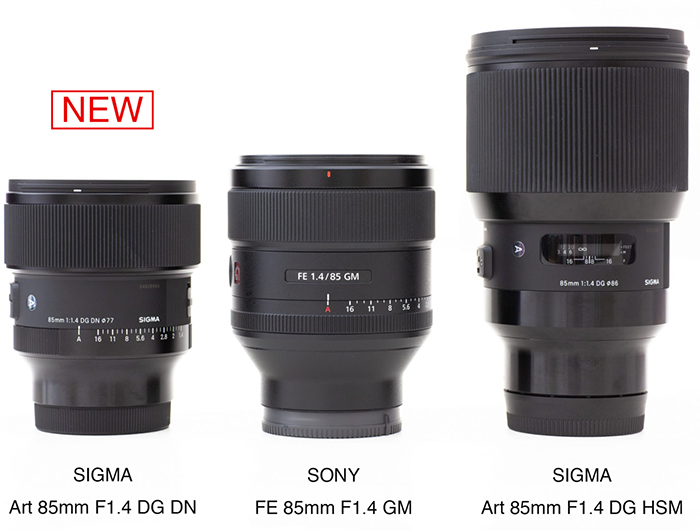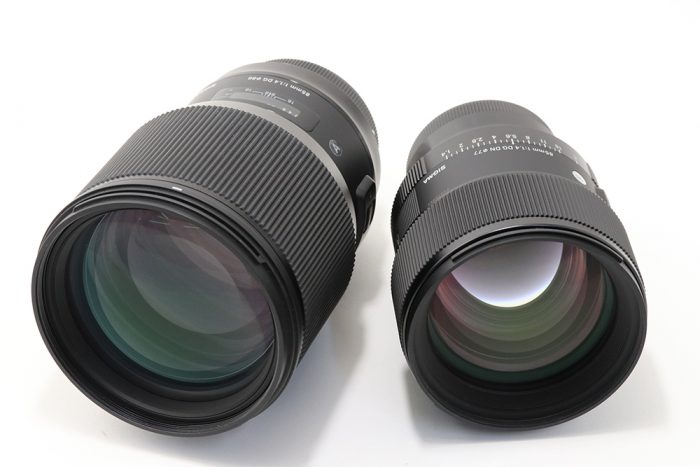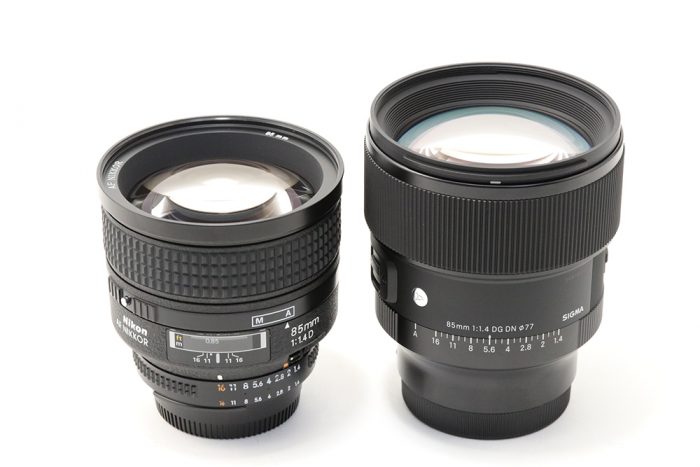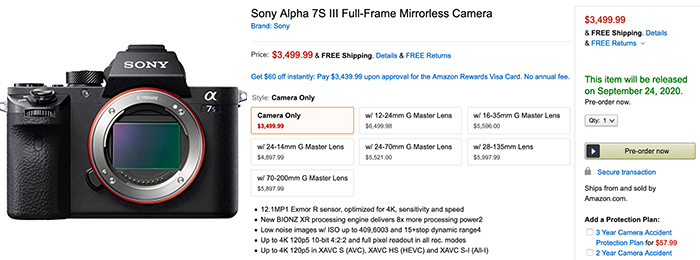Dpreview: The best lenses for Sony mirrorless cameras
Dpreview published their list of best lenses for E-mount. Check it out!
Dpreview published their list of best lenses for E-mount. Check it out!
In the past SAR readers often criticized Matt Granger for being a “Nikon guy“. Well he is no more! He is selling all his gear and you can buy it at mattgranger.com. He is now happy with his Sony A7rIV :)
Sigma 85mm f/1.4 FE preorder at BHphoto, Amazon, Adorama, FocusCamera .In Europe at Amazon DE, Amazon UK.
This is a size comparison posted by Mapcamera:

The lens really looks greta on the Sony:

Also Fujiablog shared some nice images:

On the left the older 85mm lens and on the right the new lens. And below you can see the Sigma comparison with the Nikon’s Ai AF Nikkor 85mm F1.4D IF:

Dpreview published the full Sony A9II review and concluded:
The Sony Alpha 9 Mark II comes with the best autofocus system we’ve seen. It’s compact yet has a good-sized grip, produces great Raw and JPEG files, offers excellent battery life and solid video capture. That said, we do think its video capabilities and rear screen could be updated, and of course, this is a sports camera, so those looking for maximum resolution or dynamic range are barking up the wrong tree. But the a9 II meets and, in some cases, exceeds the capabilities of its peers and makes for a truly compelling value for sports and action photographers.
Sony A9II at BHphoto. Adorama. Amazon. FocusCamera. BuyDig. Calumet DE. WexUK. ParkCameras.

Sony A7sIII preorder at Adorama. BHphoto. Amazon. FocusCamera. Fotokoch. Calumet DE. WexUK. Park UK.
Dpreview is testing the A7sIII and claims the rolling shutter is impressive.
Philip Bloom: Let’s talk about the Sony A7S III & The Canon R5
Behind the scenes | Run and gun with Brandon Li | Alpha 7S III
Sony A7S III Vs Sony A7S II | Should you upgrade?
Alpha 7S III | Online Webinar with Industry Experts Den Lennie and Brandon Li | Sony | α
The REAL reasons I switched from Canon to Sony (A7SIII vs R5 & R6)
German: Sony A7S III: Die Traumkamera im ausführlichen Test | 4K
Sony A7sIII Preorders:
Sony A7sIII in USA at Adorama (up to $400 off with lens), BHphoto, Amazon.
Sony A7sIII in EU at Fotokoch. Calumet DE. WexUK. Park UK.
New Sony A7sIII accessories:
You will also have to preorder the world’s first CFexpress Type A cards at Adorama, BHphoto. Amazon.
And of course the new Sony MRW-G2 CFexpress Type A/SD Memory Card Reader at Adorama and BHphoto.
Parker Walbeck just published this 25min long comparison video. And Digitalcameraworld published the full Sony A7sIII review with the following conclusion:
Apart from a big and expensive cinema camera, this is the only camera that can shoot 4K at 60p full frame with no crop, recorded internally, in 10-bit 4:2:2 with no limitations on recording time and with all the advanced AF functions still working. As well as 240fps in HD and very little rolling shutter. Those are the real-world specs that matter and that’s what makes it a winner.
Sony A7sIII Preorders:
Sony A7sIII in USA at Adorama (up to $400 off with lens), BHphoto, Amazon.
Sony A7sIII in EU at Fotokoch. Calumet DE. WexUK. Park UK.
New Sony A7sIII accessories:
You will also have to preorder the world’s first CFexpress Type A cards at Adorama, BHphoto. Amazon.
And of course the new Sony MRW-G2 CFexpress Type A/SD Memory Card Reader at Adorama and BHphoto.